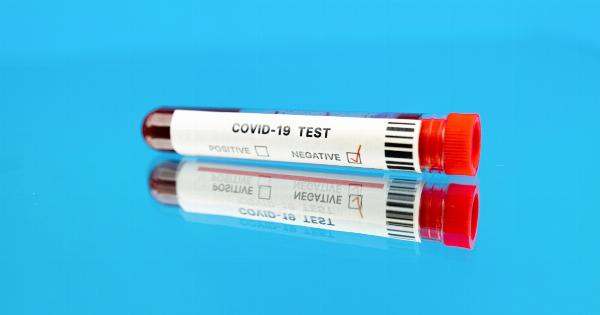Testicular cancer is a type of cancer that develops in one or both testicles, which are the male reproductive glands that produce sperm and testosterone.
It is a rare form of cancer, but it is the most common cancer in males between the ages of 15 and 35. The good news is that testicular cancer is highly treatable if detected early.
Current methods for detecting testicular cancer
The current methods for detecting testicular cancer include a physical exam, ultrasound, blood tests, and biopsy. These tests can be expensive, time-consuming, and invasive.
Moreover, men may feel reluctant to undergo these tests for fear of embarrassment or discomfort.
The discovery of a new method
Recently, a group of Spanish researchers discovered that a pregnancy test can also detect testicular cancer. The idea came from a young man who noticed a lump in his left testicle and decided to take a pregnancy test as a joke.
To his surprise, the test came back positive. He shared this finding with his doctor, who ordered several blood tests and an ultrasound, which confirmed the diagnosis of testicular cancer.
How the pregnancy test works
The pregnancy test works by detecting a hormone called human chorionic gonadotropin (hCG), which is produced by the placenta during pregnancy. However, hCG can also be produced by some testicular cancers.
This is because some testicular cancers are germ cell tumors, which means that they originate from the same cells that produce sperm, and these cells can also produce hCG.
The study
The Spanish researchers conducted a study of 73 men with known testicular cancer. They found that 48 out of 73 men (65.8%) had elevated levels of hCG in their urine, which means that they would have tested positive on a pregnancy test.
Moreover, 23 out of 25 men (92%) with early-stage testicular cancer had elevated levels of hCG in their urine, which makes the pregnancy test a highly sensitive tool for detecting testicular cancer in its early stages.
The benefits of using the pregnancy test
The pregnancy test for testicular cancer detection has several benefits:.
- It is a simple, easy, and non-invasive test that can be done at home.
- It is a cost-effective test that does not require specialized equipment or personnel.
- It is a sensitive test that can detect testicular cancer in its early stages, when it is highly treatable.
- It is a test that can be less embarrassing or intimidating for men compared to other tests.
The limitations of using the pregnancy test
The pregnancy test for testicular cancer detection has several limitations:.
- It is not a specific test, as some other conditions can also produce hCG, such as testicular trauma, infections, or certain medications.
- It cannot distinguish between different types of testicular cancer, such as seminomas or non-seminomas, which may have different treatment options.
- It cannot provide information about the size, location, or spread of the tumor, which may require further tests, such as ultrasound or CT scan.
Conclusion
The pregnancy test for testicular cancer detection is a promising and innovative approach that can complement the existing methods for detecting testicular cancer.
It is a simple, easy, and non-invasive test that can be done at home, and it has a high sensitivity for detecting testicular cancer in its early stages. However, it is not a specific test and cannot replace other tests, such as ultrasound or biopsy, that provide more detailed information about the tumor.
Therefore, men who suspect they may have testicular cancer should consult their doctor and undergo a thorough evaluation.





























